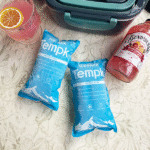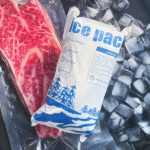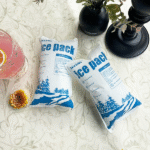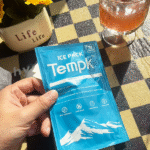Vaccin Cold Chain: How to Protect Potency and Streamline Logistics in 2025
Vaccines are delicate biological products that can lose effectiveness if they are exposed to the wrong temperature, light or handling conditions. Maintaining a stable Vaccin Cold Chain is crucial for keeping each dose potent and safe. According to CDC guidance, la plupart des vaccins doivent être conservés entre 2 °C et 8 °C, with some requiring deep freeze conditions or even ultra cold temperatures. Yet industry estimates suggest that up to 50 % of vaccines are discarded globally because they are stored outside the correct temperature range, provoquant US$20–35 billion in losses each year. This guide is updated for 2025 and helps toi preserve potency, reduce waste and leverage the latest technologies in vaccine cold chain logistics.

What temperature ranges protect vaccine potency? – includes long tail keywords like vaccine cold chain storage temperature range et ultra cold vaccines.
How do you choose and monitor cold chain equipment? – covering digital data loggers, Capteurs IoT et purpose built refrigerators.
What causes shipping losses and how can you prevent them? – focusing on cold chain temperature excursions et micro degree deviations.
Which innovations and market trends will shape vaccine cold chain logistics in 2025? – exploring transparence de la blockchain, AI route optimisation, solar cold storage and other emerging technologies.
Common questions about vaccine cold chain – addressing high search volume queries about storage durations, surveillance et conformité réglementaire.
What temperature range should vaccines be kept in to maintain potency?
Refrigerated vaccines must stay between 2 °C et 8 °C (36 °F – 46 °F). Frozen vaccines like varicella and certain COVID 19 formulations require –50 °C to –15 °C, et ultra cold mRNA vaccines must be kept at –90 °C to –60 °C. Exposure to temperatures outside these ranges reduces potency and can render vaccines ineffective. Overheating breaks down proteins, while freezing certain vaccines forms ice crystals that damage molecular structures.
Why temperature control is non negotiable
When vaccines are exposed to inappropriate conditions, the damage is irreversible – potency cannot be restored. Even a single exposure to freezing temperatures (0 ° C ou plus bas) can destroy vaccines containing adjuvants. Micro degree deviations of just 1–2 °C can degrade sensitive biologics, vaccines or insulin, donc continuous monitoring is essential. According to the CDC’s storage and handling toolkit, temperature monitoring devices should be used in every storage and transport unit.
Detailed ranges and examples
| Storage Unit Type | Plage de température | Example Vaccines | Importance pratique |
| Pharmaceutical grade refrigerator | 2 ° C - 8 ° C | Influenza, DTaP, VPH, MMR and most routine vaccines | Stable refrigerated temperatures protect potency; dedicated units prevent freezing caused by shared freezer compartments |
| Medical freezer | –50 °C– –15 °C | Varicella, mpox (Jynneos), some COVID 19 vaccines like Moderna’s Spikevax | A separate freezer keeps frozen vaccines away from warm air; manual defrost units require regular maintenance |
| Ultra cold freezer | –90 °C– –60 °C | mRNA vaccines such as Pfizer BioNTech Comirnaty | These specialised units have alarms and backup power; they are vital for high value biologics and gene therapies |
Practical tips for temperature control
Use purpose built units: Choose pharmaceutical grade refrigerators and freezers instead of household or dorm style units.
Set thermostats at the midpoint: Adjust refrigerators to around 5 °C and freezers to around –25 °C to minimise fluctuations.
Organise inventory: Keep vaccines in original boxes to protect from light; rotate stock using the first expired, first out method.
Avoid overcrowding: Store vaccines in the centre of shelves and leave space for air circulation.
Train staff and develop SOPs: Facilities should maintain written procedures for routine and emergency storage and train staff annually.
Cas du monde réel: Dans 2024 a clinic in upstate New York avoided wasting over US$20,000 in vaccines when a freezer failed because staff had a backup unit, documented that the backup maintained 2 ° C - 8 ° C, and executed their emergency plan quickly.
How do you choose and monitor cold chain equipment in 2025?
Selecting the right equipment and monitoring it continuously are critical to maintaining vaccine potency. The CDC recommends using purpose built or pharmaceutical grade units for both refrigeration and freezing. If pharmaceutical grade units are unavailable, stand alone household units may be used, but combination refrigerator/freezers and dorm style units should never be used. Each unit must have enough space to store the busiest season’s inventory without crowding.
Digital data loggers and IoT sensors: Pourquoi ils comptent
CDC guidance emphasises that every storage unit should have a calibrated Enregistreur de données numériques (DDL) equipped with a buffered probe, out of range alarm, low battery indicator and programmable logging interval. A DDL records minimum and maximum temperatures at least every 30 minutes and stores data for three years.
Modern cold chain logistics increasingly rely on Internet des objets (IoT) capteurs. These devices continuously measure temperature, humidité, vibration and GPS location, sending real time alerts when excursions begin. Industry reports estimate that up to 20 % of biologics shipments are lost each year due to cold chain failures, and IoT systems close this gap by providing continuous data, predictive analytics and automated documentation. Analysts predict that by 2030, 75 % of all pharmaceutical shipments will use IoT based tracking, underscoring the need to invest in these technologies now.
Monitoring and response procedures
Check temperatures twice daily: Record minimum and maximum temperatures at the start of each workday and before closing. If the device does not display min/max readings, record temperatures at least twice daily.
Maintain backup devices: Keep at least one spare DDL or TMD in case of primary device failure.
Examinez régulièrement les données: Download and review DDL data at least every two weeks or immediately after a temperature excursion.
Élaborer des SOP: Written standard operating procedures should cover routine storage, emergency procedures, contacts and training requirements.
Former le personnel: All personnel who handle vaccines should undergo orientation and annual refresher training.
Label and segregate exposed vaccines: If a temperature excursion occurs, label affected vials “DO NOT USE,” segregate them and contact the manufacturer or health authority for guidance.
What causes shipping losses in the vaccine cold chain, and how can you prevent them?
Shipping losses often stem from excursions de température, transport delays and poor packaging. Multi modal routes and unexpected delays increase the risk that vaccines remain outside the optimal temperature window. Inadequate insulation and shock protection allow thermal fluctuations or physical damage to compromise product integrity.
Understanding the scope of losses
The pharmaceutical sector is estimated to lose US$20–35 billion annually due to cold chain failures. Jusqu'à 50 % de vaccins may be discarded globally because they are stored outside precise temperature thresholds. Biologics account for roughly 30 % of prescription drug sales, making them particularly vulnerable if cold chain integrity fails. These losses not only undermine return on investment but also jeopardise patient safety and public trust.
Strategies to reduce shipping loss
Investissez dans une surveillance intelligente: IoT sensors provide real time temperature, humidity and location data and issue instant alerts when excursions occur. Combined with AI and predictive analytics, they can forecast risks and trigger corrective action.
Optimise routes with AI: Artificial intelligence can analyse real time traffic and weather data to generate optimal routes, reducing transit time and exposure to adverse conditions. Predictive analytics and digital twins help logistics teams identify upcoming temperature excursions.
Improve packaging: Use insulated shipping boxes with phase change materials, vacuum panels or active cooling systems to maintain required temperatures during long journeys. Shock protection and vibration dampening are critical for fragile biologics and cell therapies.
Planifier les retards: Build contingency plans for severe weather, geopolitical events or infrastructure failures. Maintain backup cooling units and emergency power supplies.
Strengthen documentation: Improve communication across the supply chain. Digital platforms and blockchain based tracking provide transparent, tamper proof records of each step, ensuring trust and compliance.
Micro degree management
Vaccine potency can degrade with deviations as small as 1–2 °C. Donc, proactive monitoring and fast intervention are essential. Facilities should calibrate monitoring devices every two to three years and replace them if accuracy drifts. Pensez à utiliser jumeaux numériques – virtual models of your cold chain – to simulate temperature fluctuations and test contingencies before real events occur. These tools support better planning and reduce the risk of expensive excursions.
Which innovations and market trends will shape the vaccine cold chain in 2025?
The vaccine cold chain is evolving rapidly, driven by new technologies and surging demand for biologics. The global healthcare cold chain logistics market is valued at USD 59.97 milliards en 2024 et devrait atteindre USD 65.14 milliards en 2025 et USD 137.13 milliards 2034, grandir à un TCAC de 8.63 %. Entre-temps, the market for vaccine shippers alone is expected to grow from USD 1.5 milliards en 2024 à USD 3.5 milliards 2033, reflecting expanding immunisation programmes.
Top technology trends in 2025
Blockchain pour la traçabilité: Blockchain creates transparent, tamper proof records of vaccine movements. Real time data logs on temperature, humidity and travel time can be shared with stakeholders to ensure trust and regulatory compliance.
Chambre froide à énergie solaire: In regions with unreliable power grids, solar powered units provide sustainable, cost effective cold storage. Commercial electricity averaged 13.10 cents per kWh in 2024, while solar rates ranged from 3.2 à 15.5 centimes par kWh, highlighting the economic advantages of solar solutions.
Capteurs intelligents compatibles IoT: IoT networks measure temperature, humidité, shock and GPS location, sending alerts when conditions deviate from the safe range. These devices also enable predictive analytics and AI assisted route planning.
Optimisation des itinéraires grâce à l'IA: AI analyses real time traffic and weather to propose the most efficient routes, reducing transit time and risk. Predictive models can forecast equipment malfunctions and recommend interventions.
Congélateurs cryogéniques portables: Emerging freezers maintain ultra cold temperatures (–80 °C à –150 °C) for cell therapies and advanced biologics, enabling deployment in remote locations.
Digital vaccine supply chain (DVSC): The DVSC leverages modern information technologies – including IoT, IA, big data and blockchain – to track and manage vaccines in real time, enhancing transparency and efficiency. International organisations like WHO encourage countries to adopt digital health strategies to strengthen vaccine logistics.
Insistance au marché
The cold chain market encompasses not only vaccines but also biologics, produits sanguins, medical devices and laboratory specimens. Le secteur biopharmaceutique currently generates the largest revenue within healthcare cold chain logistics, Pendant que le segment des vaccins is expected to register the fastest growth during the forecast period. North America leads the market due to strong demand for temperature sensitive pharmaceuticals and biologics, and Asia Pacific is the fastest growing region. A separate 2023 analysis projects the wider pharmaceutical cold chain market to reach US$24.6 billion by 2025je, fueled by growth in biologics and personalized medicines.
Common questions about the vaccine cold chain
Q1: How long can a thawed mRNA vaccine remain in a refrigerator? After thawing, the Pfizer BioNTech Comirnaty vaccine may be stored between 2 °C et 8 °C jusqu'à 10 semaines. Always check manufacturer instructions and record the thaw date.
Q2: Can I use a household refrigerator to store vaccines? If a purpose built unit is unavailable, a stand alone household refrigerator may be acceptable. Never use a dormitory style unit, and never use the freezer compartment of a combination refrigerator/freezer for vaccines.
Q3: Qu'est-ce qu'une excursion de température? A temperature excursion occurs when the temperature falls outside the recommended range for more than 15 minutes or drops below 2 °C. Dans de tels cas, mark affected vials “DO NOT USE” and consult your health authority.
Q4: How often should digital data loggers be calibrated? Calibration ensures accuracy and should be performed every two to three years, or according to manufacturer recommendations.
Q5: Why are vaccines discarded so often? Jusqu'à 50 % of vaccines are discarded globally because they are stored outside precise temperature thresholds. Causes include equipment failures, erreur humaine, delays and inadequate monitoring.
Résumé et recommandations
Maintaining a Vaccin Cold Chain requires meticulous attention to temperature control, sélection d'équipement, monitoring and continuous improvement. Vaccines and biologics must be stored at precise temperature ranges – usually 2 ° C - 8 ° C, –50 °C– –15 °C for frozen formulations and –90 °C– –60 °C for ultra cold products. Purpose built refrigerators and freezers paired with digital data loggers provide stable environments and continuous monitoring. Capteurs IoT, suivi de la blockchain, AI route optimisation and solar powered units offer powerful tools for modernising logistics. Market data shows the healthcare cold chain logistics sector growing rapidly – from USD 59.97 milliards en 2024 à USD 137.13 milliards 2034 – making investments in infrastructure and training both strategic and necessary.
Prochaines étapes réalisables
Assess your current cold chain readiness: Perform a self audit of equipment, journaux de température, SOPs and staff training. Identify gaps and prioritise upgrades.
Upgrade storage units: Invest in purpose built, pharmaceutical grade refrigerators and freezers. Avoid dorm style units and ensure sufficient capacity.
Mettre en place une veille numérique: Deploy calibrated digital data loggers and IoT sensors across all storage and transport units. Set alarms and review data regularly.
Develop and update SOPs: Document procedures for routine storage, emergency responses, transport and maintenance. Review them annually and after any excursion.
Formez votre équipe: Provide comprehensive training for vaccine coordinators, backup coordinators, delivery staff and clinicians. Include new technologies and regulatory updates.
Explore innovations: Pilot AI based route planning, blockchain for traceability and solar powered cold storage to enhance resilience and sustainability.
Monitor regulatory requirements: Stay updated on CDC, FDA, WHO and local guidelines for vaccine storage, manutention et transport.
S'engager avec des partenaires: Collaborer avec les fabricants, logistics providers and technology partners to build a resilient and transparent cold chain.
À propos du tempk
Tempk is a technology driven provider of Emballage de la chaîne froide, storage and monitoring solutions. Nous sommes spécialisés dans boîtes isolées, packs de glace en gel, thermal pallet covers and data logging systems that help customers maintain compliant temperature ranges from 2 °C à 8 °C jusqu'à conditions ultra froides. Notre R&D centre focuses on sustainable materials and energy efficient designs, and our products are certified for food safety and pharmaceutical use. By integrating Capteurs IoT et Analyse de l'IA, we empower you to protect high value vaccines and biologics, reduce waste and comply with stringent regulations. Whether you need a comprehensive vaccine cold chain system, training support or custom packaging, we are ready to partner with you.
Prêt à prendre le contrôle de votre chaîne du froid?
Contact our experts to discuss your specific needs, schedule a demo or request a customised solution. Together we can safeguard your vaccines, protect patients and optimise your supply chain.























